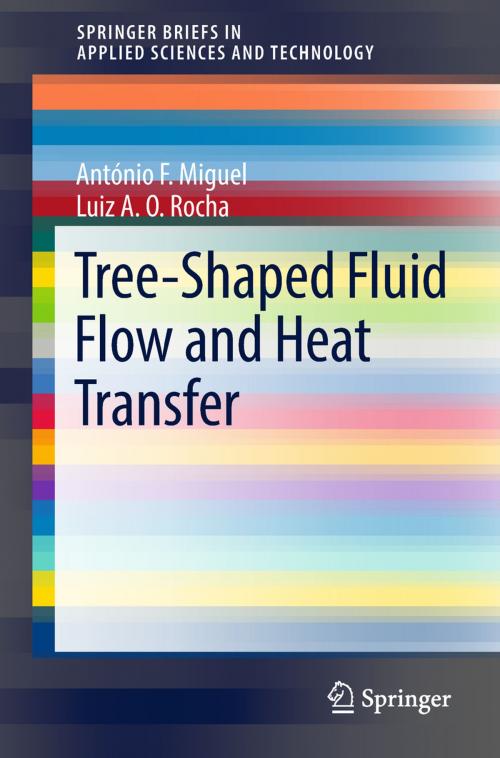Tree-Shaped Fluid Flow and Heat Transfer
Nonfiction, Science & Nature, Technology, Industrial Design, Power Resources| Author: | António F. Miguel, Luiz A. O. Rocha | ISBN: | 9783319732602 |
| Publisher: | Springer International Publishing | Publication: | April 20, 2018 |
| Imprint: | Springer | Language: | English |
| Author: | António F. Miguel, Luiz A. O. Rocha |
| ISBN: | 9783319732602 |
| Publisher: | Springer International Publishing |
| Publication: | April 20, 2018 |
| Imprint: | Springer |
| Language: | English |
This book provides the first comprehensive state-of-the-art research on tree (dendritic) fluid flow and heat transfer. It covers theory, numerical simulations and applications. It can serve as extra reading for graduate-level courses in engineering and biotechnology.
Tree flow networks, also known as dendritic flow networks, are ubiquitous in nature and engineering applications. Tree-shaped design is prevalent when the tendency of the flow (fluid, energy, matter and information) is to move more easily between a volume (or area) and a point, and vice versa. From the geophysical trees to animals and plants, we can observe numerous systems that exhibit tree architectures: river basins and deltas, lungs, circulatory systems, kidneys, vascularized tissues, roots, stems, and leaves, among others.
Tree design is also prevalent in man-made flow systems, both in macro- and microfluidic devices. A vast array of tree-shaped design is available and still emerging in chemical engineering, electronics cooling, bioengineering, chemical and bioreactors, lab-on-a-chip systems, and smart materials with volumetric functionalities, such as self-healing and self-cooling. This book also addresses the basic design patterns and solutions for cooling bodies where there is heat generation. Several shapes of fin as well as assemblies of fins are addressed. An up-to-date review of cavities, i.e., inverted or negative fins, for facilitating the flow of heat is also presented. Heat trees using high thermal conductivity material can be used in the cooling of heat-generating bodies, and can also be applied to the cooling of electronics.
This book provides the first comprehensive state-of-the-art research on tree (dendritic) fluid flow and heat transfer. It covers theory, numerical simulations and applications. It can serve as extra reading for graduate-level courses in engineering and biotechnology.
Tree flow networks, also known as dendritic flow networks, are ubiquitous in nature and engineering applications. Tree-shaped design is prevalent when the tendency of the flow (fluid, energy, matter and information) is to move more easily between a volume (or area) and a point, and vice versa. From the geophysical trees to animals and plants, we can observe numerous systems that exhibit tree architectures: river basins and deltas, lungs, circulatory systems, kidneys, vascularized tissues, roots, stems, and leaves, among others.
Tree design is also prevalent in man-made flow systems, both in macro- and microfluidic devices. A vast array of tree-shaped design is available and still emerging in chemical engineering, electronics cooling, bioengineering, chemical and bioreactors, lab-on-a-chip systems, and smart materials with volumetric functionalities, such as self-healing and self-cooling. This book also addresses the basic design patterns and solutions for cooling bodies where there is heat generation. Several shapes of fin as well as assemblies of fins are addressed. An up-to-date review of cavities, i.e., inverted or negative fins, for facilitating the flow of heat is also presented. Heat trees using high thermal conductivity material can be used in the cooling of heat-generating bodies, and can also be applied to the cooling of electronics.















